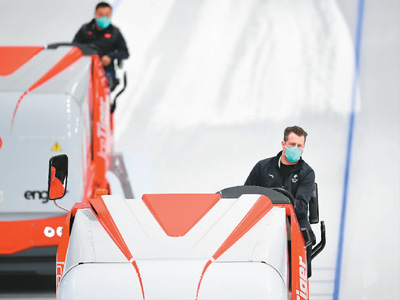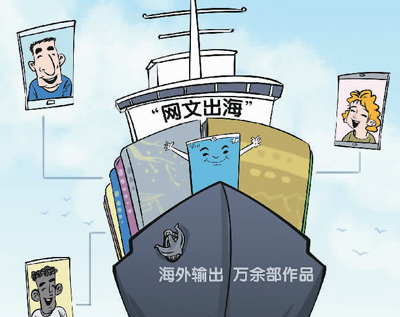Stellar Pioneers: Humanity's Transformation through Interstellar-全球速讯
InterstellarVoyagerspacecraftInthefuture,onEarth,mankindhadmadesig
In the future, on Earth, mankind had made significant advancements in space exploration. The International Space Agency (ISA) had successfully developed a revolutionary spacecraft called the Star Voyager, capable of traversing vast interstellar distances at unprecedented speeds.
 【资料图】
【资料图】
Captain John Harrison, a seasoned astronaut, was chosen to lead an ambitious mission to explore a distant star system. With a crew of scientists, engineers, and skilled researchers, they embarked on a daring adventure aboard the Star Voyager.
Their destination was Alpha Centauri, the closest star system to Earth. The journey would take several years, so the crew had to enter a deep cryogenic sleep to conserve resources and energy. During this time, the ships advanced artificial intelligence system, named Atlas, would monitor all systems and wake the crew if necessary.
Years passed, and eventually, the Star Voyager approached Alpha Centauri. Atlas woke the crew from their deep sleep, and they eagerly prepared for the exploration. They had spent years studying the star system remotely, but this was the first time humans would set foot there.
As they entered orbit around the systems habitable planet, they noticed a peculiar anomaly. There was evidence of an advanced civilization, contradicting their previous findings. Excitement filled the crew as they realized they were on the cusp of a groundbreaking discovery.
Captain Harrison and his team descended to the planets surface in specialized exploration pods. They marveled at the lush landscapes and vibrant alien species. The atmosphere was breathable, and the conditions seemed favorable for human habitation.
As they ventured deeper into the planet, they encountered the beings responsible for the civilization. The extraterrestrial species, known as the Centaurians, were highly intelligent and possessed advanced technology far beyond Earths comprehension.
Captain Harrison communicated with the Centaurians through a translation device. They shared knowledge and experiences, exchanging ideas that would benefit both planets. The Centaurians had abandoned interstellar travel, focusing instead on the development of their society and the exploration of their own planet.
The crew learned valuable insights about sustainable energy, medical advancements, and even discovered a new method for interstellar travel using the Centaurians technology. They exchanged cultural artifacts, fostering a newfound understanding and appreciation for one another.
After spending several weeks on the planet, the crew bid farewell to the Centaurians, promising to return in the future and continue their alliance. They boarded the Star Voyager, brimming with newfound knowledge and hope for humanitys future.
The return journey to Earth was filled with excitement and contemplation as the crew shared their experiences and discoveries with Atlas. Their encounter with the Centaurians had redefined their understanding of the universe and pushed the boundaries of human exploration.
When the Star Voyager finally arrived back on Earth, it was greeted with awe and celebration. The crew emerged as heroes, hailed for their pioneering journey into the unknown. The knowledge and technology brought back from Alpha Centauri propelled humankind into a new era of scientific advancements and intergalactic alliances.
Back on Earth, the crew of the Star Voyager was welcomed as heroes, their accomplishments celebrated by the entire planet. The historic mission had captured the imaginations of people around the globe, and they eagerly awaited the crews detailed reports and findings.
As Captain Harrison and his team settled back into their lives on Earth, they were invited to prestigious scientific conferences and events where they shared their experiences with the wider scientific community. Their presentations showcased the stunning landscapes they had encountered, the unique flora and fauna, and the advanced technology of the Centaurians.
During one such conference, Captain Harrison met Dr. Amelia Lawson, a renowned astrobiologist who had made significant contributions to the field of exoplanet exploration. They were immediately drawn to each others passion for discovery and the thrill of venturing into the unknown. A deep friendship developed, and soon, their shared curiosity led them to embark on a new adventure together.
Captain Harrison proposed assembling a team of scientists, engineers, and explorers to embark on a series of interstellar missions. Utilizing the knowledge and technology from their encounter with the Centaurians, they aimed to explore and study habitable exoplanets in nearby star systems.
Their first mission led them to Proxima Centauri, the closest star to the Sun. Although only a small crew could be accommodated aboard the spacecraft, the excitement and determination of this diverse group of individuals were boundless.
As they soared through space towards Proxima Centauri, Captain Harrison and Dr. Lawson prepared the crew, ensuring they were equipped with the latest scientific instruments and tools necessary for their mission. The ships AI, upgraded based on the Centaurians technology, would provide support and guidance throughout their journey.
Upon arrival, they encountered a breathtaking exoplanet teeming with vibrant bioluminescent flora. The crew marveled at the beauty of the world before them, eagerly collecting samples and conducting experiments to better understand its unique ecosystem. Excited whispers filled the ship as they discovered signs of microbial life, a groundbreaking discovery with profound implications for the existence of life beyond Earth.
Returning to Earth with their findings, the crew shared their triumphs, inspiring a new wave of scientific exploration. Collaborating with global space agencies, they launched numerous expeditions to other exoplanets, each one presenting its own mysteries and surprises.
Over time, humanitys knowledge of the universe expanded exponentially. With each new discovery, new questions arose, fueling further exploration and pushing the boundaries of human understanding. The crew of the Star Voyager, together with countless other astronauts and scientists, became the vanguards of this new age of exploration.
As the years passed, interstellar travel became more commonplace, and colonies were established on habitable exoplanets. Humanity finally stepped beyond the confines of the Solar System into a universe filled with wonders waiting to be unraveled.
Looking back on their extraordinary journey, Captain Harrison and Dr. Lawson remained in awe of the profound impact their missions had on Earth and its people. But they were humbled by the vastness of the universe, its endless possibilities, and the infinite potential for future discoveries.
However, amidst the triumphs of the crews interstellar missions, a dark and unforeseen threat loomed on the horizon. After years of peaceful coexistence and collaboration, tensions began to escalate between Earth and the Centaurians.
At first, it was nothing more than minor conflicts over resource sharing and territorial disputes. But as the divide deepened, rhetoric turned into aggression, and fears of an all-out war started to spread.
Captain Harrison, ever the peacemaker, could not stand idly by as the fragile alliance he had helped forge crumbled before his eyes. He knew that the key to avoiding catastrophe lay in communication and understanding.
Gathering his trusted crew, Captain Harrison set off on a new mission – to reestablish diplomatic ties and seek a peaceful resolution with the Centaurians. Equipped with advanced language translation technology, they ventured once again into the far reaches of space, this time as ambassadors of humanity.
The journey to the Centaurian homeworld was fraught with tension and uncertainty. The crews hearts weighed heavy with the responsibility they carried, knowing that the fate of their home planet rested on their ability to bridge the growing divide.
Upon arrival, they were greeted with suspicion and hostility. The once welcoming and curious Centaurians now viewed humanitys arrival as a threat. Captain Harrison, determined to find a peaceful solution, pleaded for a chance to engage in open dialogue.
Days turned into weeks, as the crew tirelessly negotiated, building trust and understanding with the Centaurians. Slowly but surely, walls began to crumble, and a glimmer of hope emerged.
Together, both species discovered that their aspirations for exploration and knowledge were not so different. They realized that by respecting each others boundaries and working as partners, they could achieve far greater things than they ever could have alone.
Waves of relief spread across both Earth and the Centaurian homeworld as news of the successful negotiations reached the masses. A renewed spirit of cooperation and unity swept through the populations, solidifying what had once been an uncertain alliance.
In the aftermath of the crisis, the crew of the Star Voyager returned to Earth, hailed as heroes once again. Captain Harrison and Dr. Lawson, now seen as symbols of peace and understanding, took on new roles as ambassadors, helping to forge lasting alliances with other spacefaring civilizations.
The events that transpired marked a turning point in humanitys history. The threat of war had brought them to the precipice, but it was through diplomacy and empathy that they had resolved their differences and emerged stronger.
With a newfound understanding of the complexities of the universe and the importance of interstellar cooperation, humanity embraced a future where exploration was not just a solitary endeavor - it was a collaborative effort, one that brought different civilizations together in a shared quest for knowledge and exploration.
As the crew of the Star Voyager continued their interstellar journey, a startling discovery sent shockwaves through their ship. While exploring a distant planet, they stumbled upon remnants of an ancient civilization - a civilization that had once reached incredible levels of technological advancement before mysteriously vanishing.
Intrigued by the enigma, Captain Harrison and his crew plunged deeper into the mysteries surrounding this extinct civilization. They meticulously studied the ruins, deciphering forgotten languages and piecing together fragments of ancient texts. What they uncovered was beyond their wildest imaginations.
The ancient civilization, known as the Eldari, were not only masters of technology but also had unparalleled knowledge of the universe and its secrets. Astounding discoveries, such as wormhole travel, anti-gravity technology, and even the ability to manipulate time itself, were mentioned within the remnants of their ancient texts.
Realizing the incomprehensible power that lay buried beneath the debris of this forgotten civilization, Captain Harrison faced a grave decision. Should they harness this newfound knowledge for the advancement of humanity, or should they tread cautiously, knowing that such immense power could be catastrophic if mishandled?
Debates consumed the Star Voyager as the crew grappled with the ethical implications of their discovery. Some argued that humanity had a moral obligation to learn from the Eldari and use their advanced technology responsibly. Others warned of the potential risks and dangers that could arise from meddling with forces they couldnt fully comprehend.
Ultimately, Captain Harrison made a thought-provoking decision. Rather than exploiting the Eldari technology, he proposed using this newfound knowledge to inspire the scientific community of Earth. He believed that by sharing their discoveries with the brightest minds on their home planet, they could collectively work towards advancing humanity without putting it at unnecessary risk.
The crew returned to Earth, armed with the remnants of the Eldari civilization and the remarkable knowledge they had uncovered. Their arrival caused a worldwide sensation, sparking global curiosity and igniting a scientific renaissance.
Together with the worlds greatest minds, Captain Harrison and his crew founded the Eldari Institute, a collaborative center dedicated to studying the remnants of this lost civilization and pushing the boundaries of human understanding. Scientists from diverse backgrounds eagerly flocked to the institute, their shared goal being to unlock the secrets that the Eldari left behind.
In the years that followed, the Eldari Institute became the epicenter of scientific breakthroughs that advanced humanity by leaps and bounds. New technologies emerged, revolutionizing various fields, such as medicine, energy, and space exploration. The world saw great leaps in sustainable energy sources, cures for incurable diseases, and even the ability to travel farther into space than ever before.
The legacy of the Eldari did not end with scientific advancement. The knowledge they left behind also instilled in humanity a sense of humility and responsibility. They learned the importance of preserving their home planet and working collectively to protect the galaxies they explored.
As the Star Voyager continued its explorations, powered by the newfound wisdom of the Eldari, Captain Harrison and his crew not only widened the horizons of human knowledge but also became stewards of the universe. They advanced their missions with caution, always mindful of the consequences of their actions.
In the end, humanitys encounter with the Eldari propelled them into an era of unprecedented progress and understanding. No longer driven solely by the thirst for conquest or self-gain, humanity united under a common goal - to explore the universe, learn from its mysteries, and protect the delicate balance of life it harbored.
Hence, the Star Voyager, now imbued with the spirit of discovery, continued its journey through the vast reaches of space, forever guided by the wisdom of a long-lost civilization. Their mission had transformed from mere exploration to a grand pursuit of knowledge and harmony, forever shaping the destiny of humanity in the cosmos.
关键词:
Copyright 2015-2022 华南学术网 版权所有 备案号: 粤ICP备18025786号-52 联系邮箱: 954 29 18 82 @qq.com



